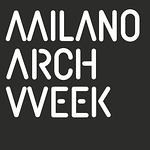In an era when the contents of every public conversation are streamed, stored online, and easily usable individually, it makes sense to question the value of the “interview event”: what it means to be physically present in the space where intellectual exchange takes place. The e-flux Teatrino is designed as an immersive, participatory and symbolic space. A small pagan temple to celebrate the rite of the interview in its collective dimension.
There is a wide range of possible ways to connect the interviewee, interviewer, and audience. Mezzanotte e Dintorni, an Italian talk show from the early 1990s, builds the paradox of an intimate conversation for the benefit of a vast television audience in the nighttime band of Rai programming. The audience is absent from the scene, but the camera movement tries to reconstruct the place of the interview, creating the illusion of being behind the interviewee, then the interviewer, sometimes lingering on their faces, or on the image of the big clock positioned between the protagonists delimiting the space of the conversation in a temporal sense. In Match - Domande Incrociate, another Italian talk show from the 1970s, a three-party conversation involves two protagonists and a moderator. The roles of the interviewees and interviewer are continuously switched, provoking a circular exchange of ideas. Positioned very close to the conversation, the studio public becomes a background to the scene and actively participates in it with gestures, such as smoking in the studio, and with questions or comments. Voices of the audience are captured by a giraffe microphone, whose telescopic arm—able to move along the whole of the small tribune—enters the quadrant, revealing itself as a directorial device.
In the never-aired Owl’s Legacy, artist Chris Marker explores the Greek origins of contemporary Western culture by bringing together a group of intellectuals, philosophers, directors and composers around a rich banquet for discussion. Food and drinks become the main vehicle of debate and encourage digressions and drifts of thought. The bodily dimension of the interview is exposed to extreme stress in the case of endless events such as the 24-hour Marathon conducted by Hans Ulrich Obrist and Rem Koolhaas in the 2006 Serpentine Pavilion in London, while the body of the speaker is sometimes deliberately removed from the public eye, as if a mafia repentant on trial. Ultimately, every interview is an attempt at meticulously dissect the interviewed subject: their thought, work, or even private life. The procedures of this sectioning, in order to be assimilated and witnessed, must take place in front of an audience that can have a more or less active role in the operation.
The e-flux Teatrino is a temporary pavilion designed to host interviews and conversations on architecture in presence of an audience of about ninety people. Placed in front of the main entrance of La Triennale di Milano, it consists of a base and an aerostatic roof. The base consists of an octagonal structure hosting a circular cavea with an area of about 50 square meters. The cavea is accessed through two small stairs on opposite sides. Interviewees and interviewers sit on the lowest step of the cavea, inside a circular space one-and-a-half meters in diameter. All the rest of the space, divided into 50-centimeter-high and 75-centimeter-deep steps, is reserved for the public. The structure of the entire base is made of a wooden frame covered with fir plywood panels for flooring and diagonal wooden slats for wall cladding. The roof structure is made of eight cables anchored at the top of the base and tensioned by a helium balloon five meters in diameter. The balloon carries an upward force of 42 kilograms. Along the cables there are printed triangular wedges of micro-perforated nautical fabric. The entire roof structure, from the cables’ anchors on the base to the bottom of the balloon, is eleven meters high and weighs about sixteen kilograms.
The e-flux Teatrino was co-commissioned by e-flux Architecture and Milano Arch Week for the purpose of hosting conversations with world-renowned architects about the contemporary agency and future challenges of architectural practice. An edited selection of these discussions will be published on e-flux Architecture later in the summer. Produced in partnership with Filiera del Legno FVG, it was inaugurated on May 26–27 and will remain standing in front of the Triennale building throughout the summer.



